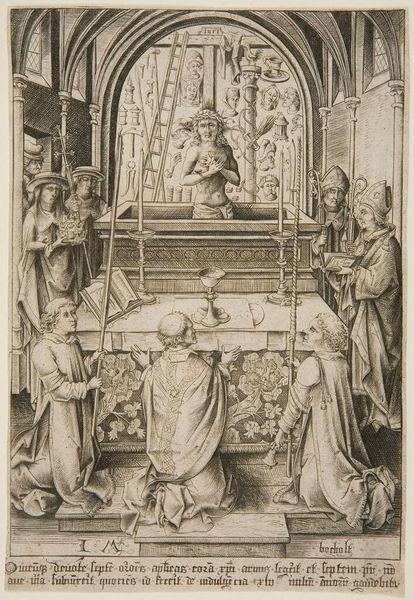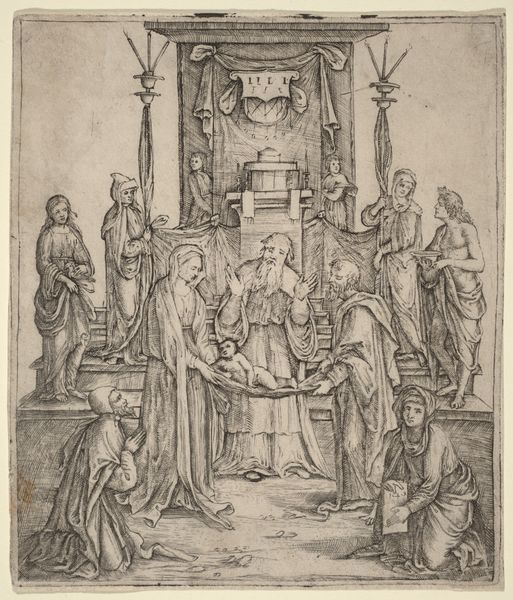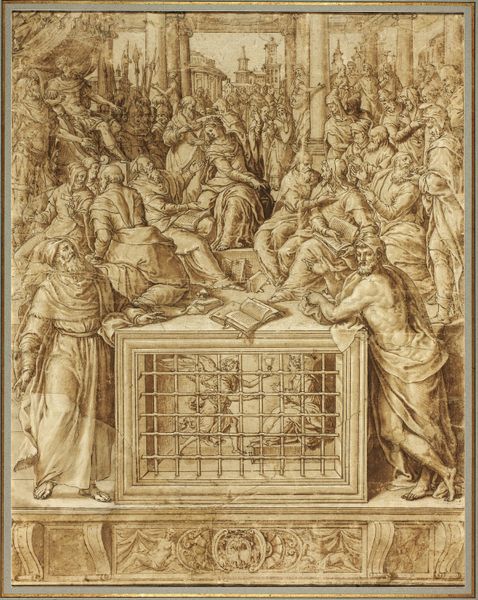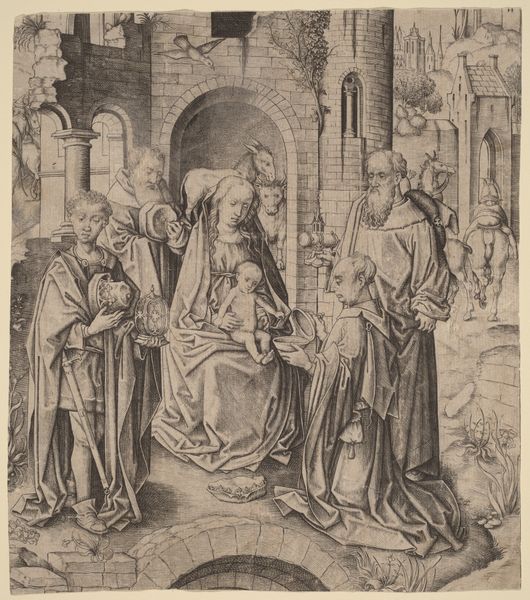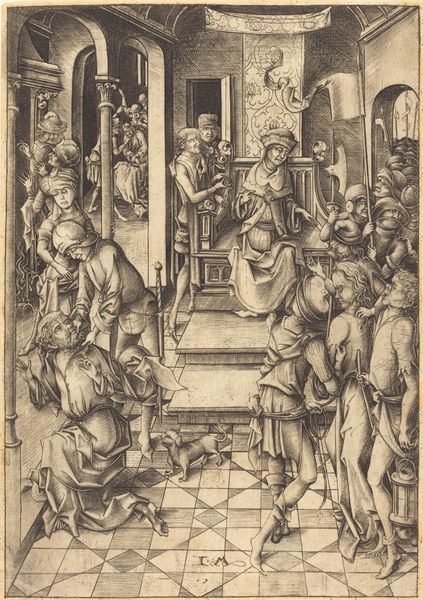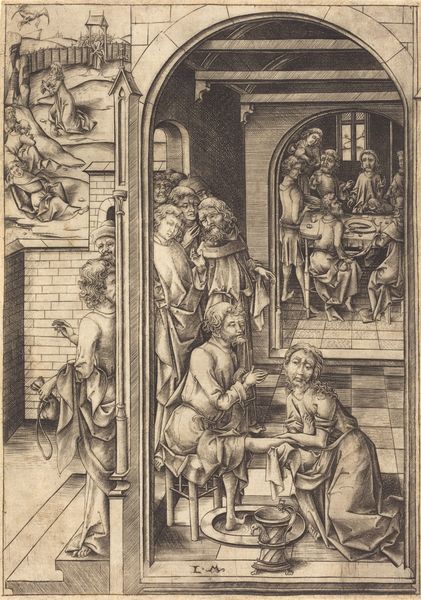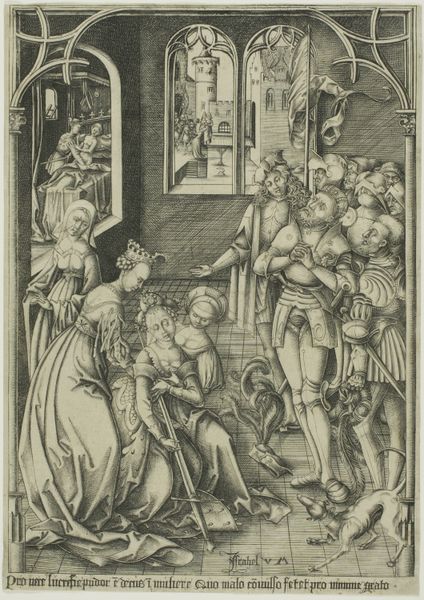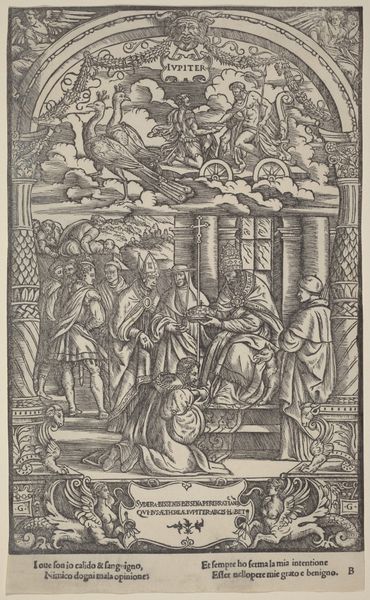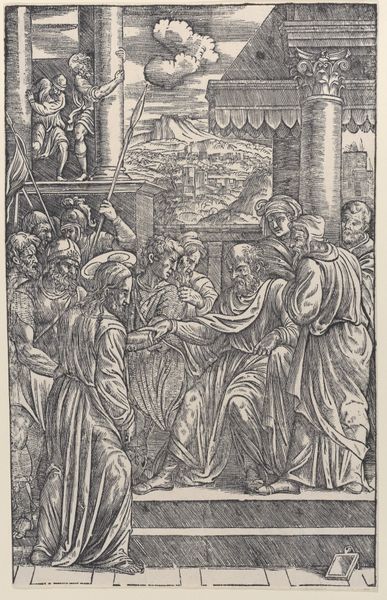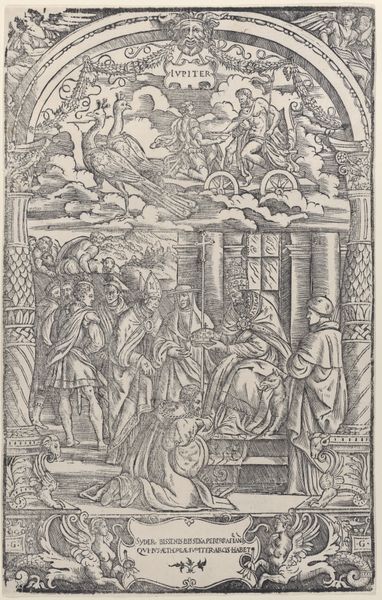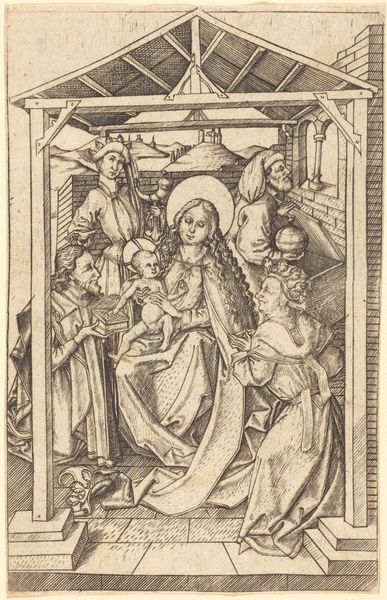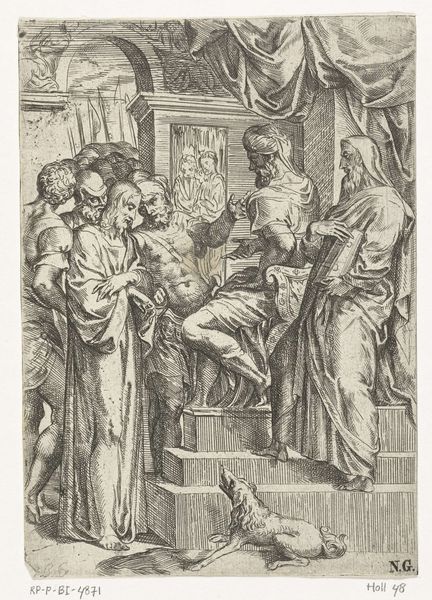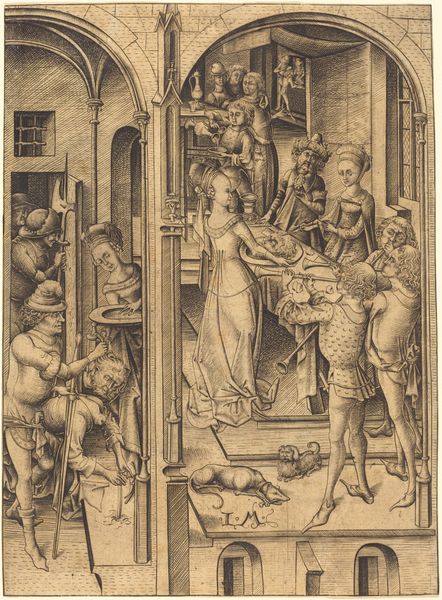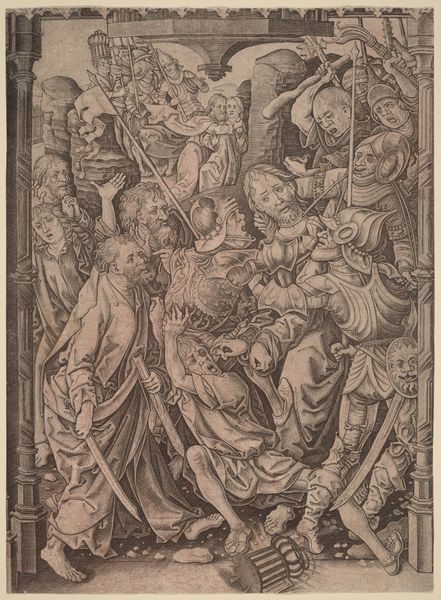
print, engraving
#
medieval
#
pen drawing
# print
#
perspective
#
figuration
#
line
#
history-painting
#
northern-renaissance
#
engraving
Copyright: National Gallery of Art: CC0 1.0
Editor: Here we have "The Mass of Saint Gregory," an engraving made by Israhel van Meckenem around 1480 to 1485. It's a busy composition, a packed interior scene rendered entirely in these precise, controlled lines. What can you tell us about this print? Curator: Let's look closely at the production of this image, this intricate engraving. The sheer labor involved in creating this matrix, each line etched meticulously, speaks to a highly developed artisanal skill. But more than just appreciating it as “art,” let’s consider how this print would have circulated. It’s a commodity, made to be replicated, bought, and consumed. How does this repetitive making change its value, especially its spiritual value given the sacred scene? Editor: So you’re saying that the act of reproduction itself influences the meaning of the image? Curator: Precisely. Think of the copperplate, the material from which this image emerges. The artist, or workshop, isn't just representing a holy event; they are engaging in a form of industrial reproduction, bringing religious imagery to a wider audience. Were these prints accessible to the common person, or only to certain wealthier members of society? Editor: That’s fascinating! It changes how I view the artwork, shifting the focus from simply admiring it, towards contemplating how the materiality and consumption shaped its purpose. Curator: Exactly, considering production and dissemination allows us to explore broader cultural and economic contexts around "The Mass of Saint Gregory".
Comments
No comments
Be the first to comment and join the conversation on the ultimate creative platform.
